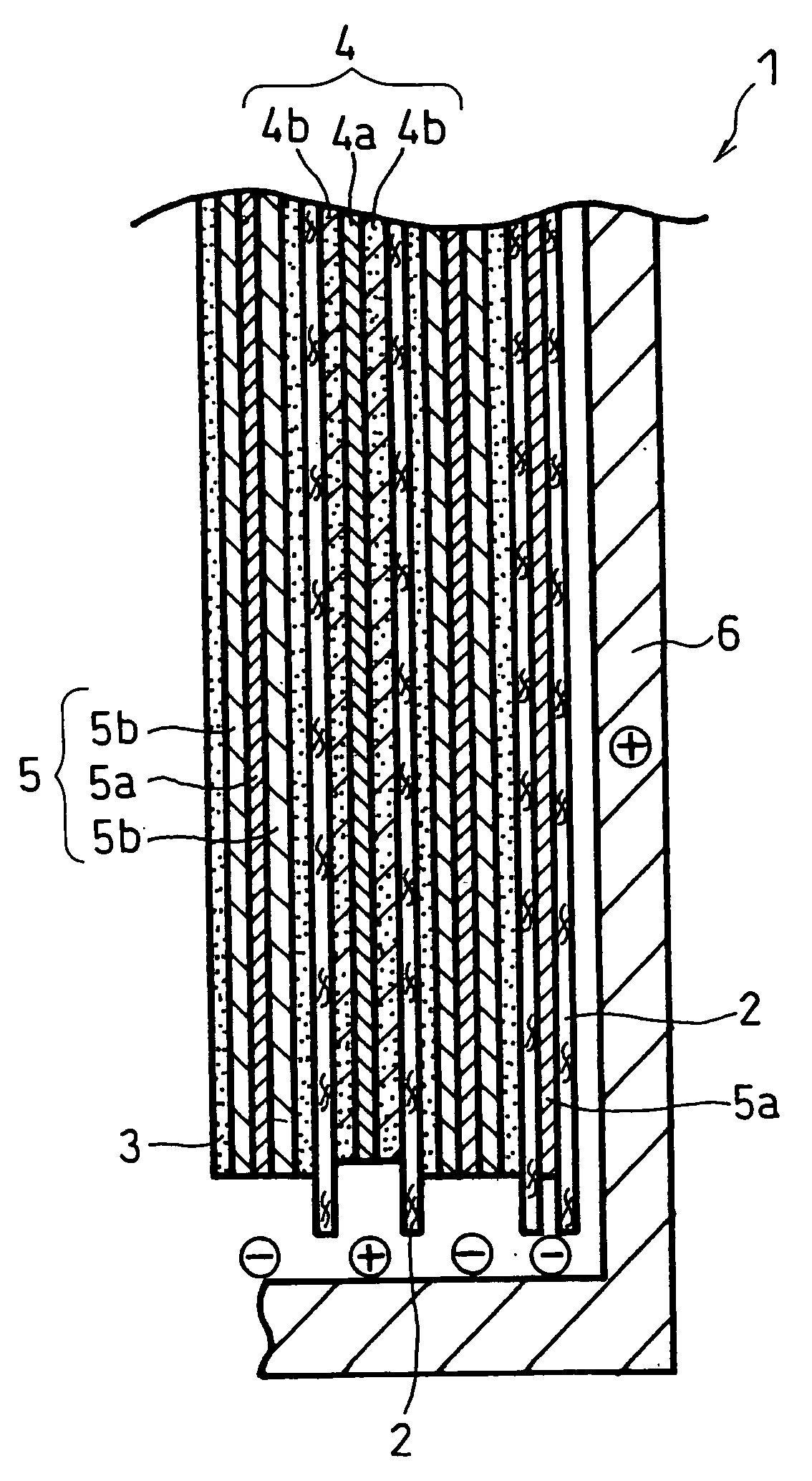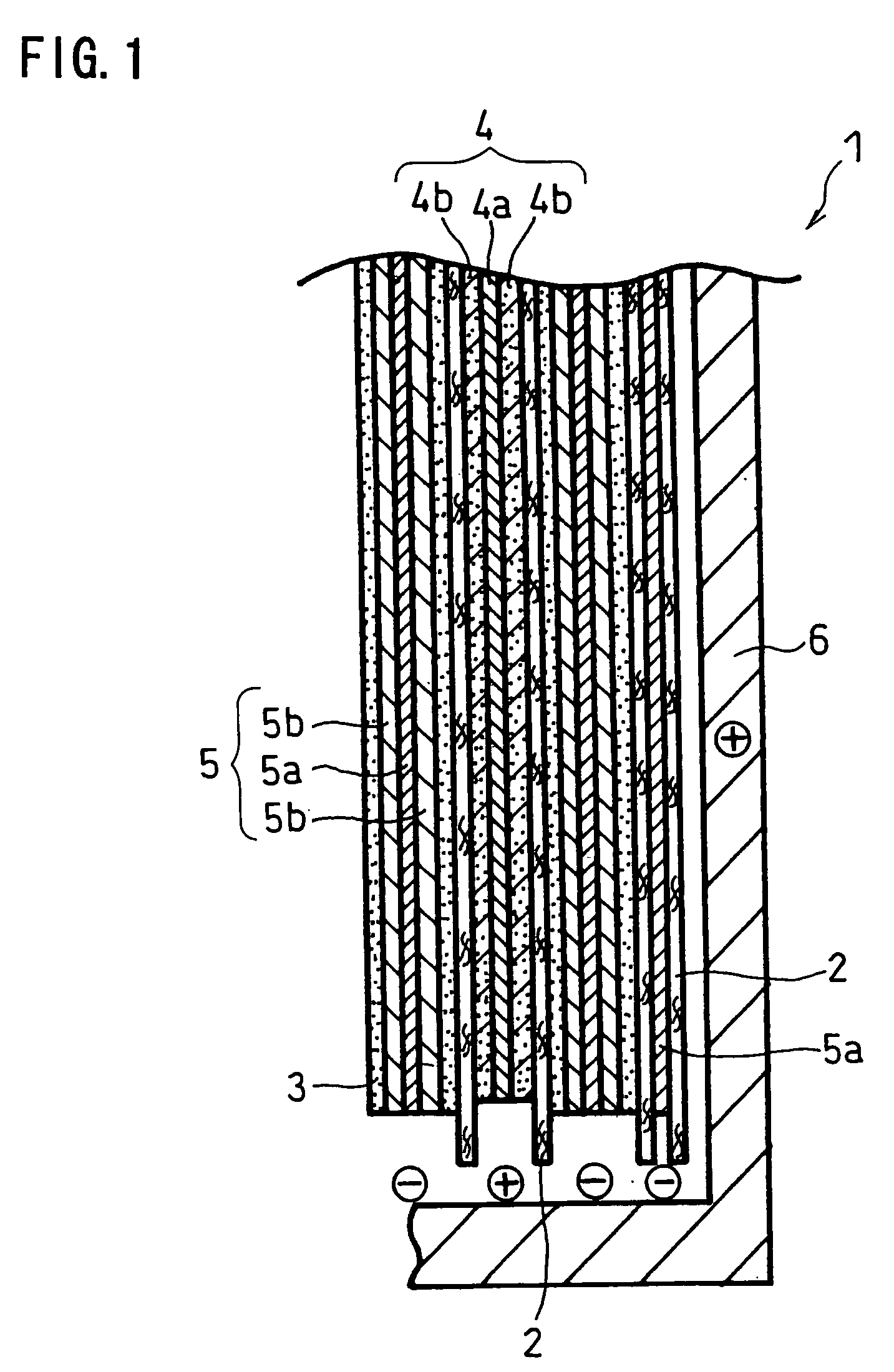Non-aqueous electrolyte secondary battery
- Summary
- Abstract
- Description
- Claims
- Application Information
AI Technical Summary
Benefits of technology
Problems solved by technology
Method used
Image
Examples
example 1
[0042] In this example, an electrode group having a structure shown in FIG. 1 was first produced.
[0043] A paste for forming positive electrode active material layer was prepared by mixing 30 kg of lithium cobaltate, 10 kg of PVDF #1320 (a N-methylpyrrolidone (NMP) solution with a solid content of 12 parts by weight), 900 g of acetylene black and an appropriate amount of NMP with a double arm kneader. The obtained paste for forming positive electrode active material layer was applied onto both surfaces of a 15 μm thick aluminum foil current collector, which was then dried and rolled to have a total thickness of 108 μm. Then, the resultant was cut into a size of 56 mm in width and 600 mm in length (each surface having an area of 336 cm2). Thereby, a positive electrode 4 was produced.
[0044] Meanwhile, a paste for forming negative electrode active material layer was prepared by mixing 20 kg of artificial graphite, 750 g of BM-400B (trade name) available from Zeon Corporation, Japan (a...
examples 2 to 4
[0049] A cylindrical lithium ion secondary battery was produced in the same manner as in EXAMPLE 1 except that the thickness of the porous heat-resistant layer 3 was changed to 20 μm (EXAMPLE 2).
[0050] A cylindrical lithium ion secondary battery was produced in the same manner as in EXAMPLE 1 except that the thickness of the porous heat-resistant layer 3 was changed to 40 μm (EXAMPLE 3).
[0051] A cylindrical lithium ion secondary battery was produced in the same manner as in EXAMPLE 1 except that the thickness of the porous heat-resistant layer 3 was changed to 60 μm (EXAMPLE 4).
example 5
[0052] A cylindrical lithium ion secondary battery was produced in the same manner as in EXAMPLE 2 except that the total thickness and the length of the positive electrode 4 were changed to 200 μm and 300 mm, respectively (area: 168 cm2), that the total thickness and the length of the negative electrode 5 were changed to 227 μm and 387 mm, respectively, and that a cylindrical battery case having a diameter of 17.5 mm was used. The produced battery had a positive electrode area per theoretical capacity of 198 cm2 / Ah.
PUM
 Login to View More
Login to View More Abstract
Description
Claims
Application Information
 Login to View More
Login to View More - R&D
- Intellectual Property
- Life Sciences
- Materials
- Tech Scout
- Unparalleled Data Quality
- Higher Quality Content
- 60% Fewer Hallucinations
Browse by: Latest US Patents, China's latest patents, Technical Efficacy Thesaurus, Application Domain, Technology Topic, Popular Technical Reports.
© 2025 PatSnap. All rights reserved.Legal|Privacy policy|Modern Slavery Act Transparency Statement|Sitemap|About US| Contact US: help@patsnap.com


